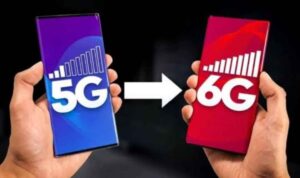
In an impressive technological leap forward, a Japanese consortium has recently introduced the world’s first high-speed 6G prototype device, promising a transformative upgrade over existing 5G technologies. This cutting-edge prototype is capable of transmitting data at an unprecedented rate of 100 gigabits per second (Gbps), marking a significant milestone in the evolution of wireless communication technologies.
The Power of 6G: What It Means for Global Connectivity
The prototype, a collaborative creation by leading Japanese telecom giants such as DOCOMO, NTT Corporation, NEC Corporation, and Fujitsu, has demonstrated capabilities that surpass anything currently available. With a range of more than 300 feet, the device operates at speeds 20 times faster than the current 5G networks, which typically offer internet speeds up to 10 Gbps but often translate to 200 to 400 Mbps in real-world scenarios.

Technological Innovations Behind the 6G Device
The standout feature of the 6G technology is its use of higher frequency bands. The prototype showcased remarkable speeds of 100 Gbps using a 100 GHz band indoors and maintained the same performance outdoors using a 300 GHz band. This advancement is critical as it shows that high-speed and stable data transmission is feasible in both indoor and outdoor environments using higher frequencies, which have traditionally presented challenges in terms of range and signal penetration.

Implications of 6G Technology
The introduction of 6G technology is set to revolutionize industries by supporting more advanced applications and services. From ultra-high-definition video streaming and sophisticated augmented reality experiences to next-generation IoT (Internet of Things) networks and mission-critical communications, 6G could dramatically reshape how we interact with digital content and each other. Furthermore, the increased speeds and improved reliability could enhance machine-to-machine interactions, autonomous vehicle performance, and even remote healthcare services.
Read this also: The New Contender: Bajaj Pulsar NS400Z – A Game-Changer in the Performance Bike Segment
Innovations Fueling the 6G Prototype
One of the most notable advancements in the 6G prototype is its utilization of extraordinarily high-frequency bands. During trials, the device operated flawlessly at 100 GHz indoors and seamlessly transitioned to 300 GHz for outdoor use. These frequencies, much higher than those used by previous generations, enable the device to overcome traditional limitations such as range and signal penetration, presenting new opportunities for consistent, high-speed data transmission.

Looking Ahead: The Future of 6G
While the prototype is an exciting preview of what’s to come, the commercial availability of 6G is still a few years away, projected to be around 2030. This gives ample time for further research, development, and addressing potential challenges such as standardization, global regulatory approvals, and ensuring compatibility with existing communication infrastructure.
The unveiling of the world’s first 6G prototype by the Japanese consortium is not just a testament to technological innovation but also a bold step toward a more connected and high-speed future. As 6G technology continues to develop, it promises to unlock new possibilities and redefine what is achievable with wireless communications.
This breakthrough sets the stage for a new era of digital connectivity, and the world will be watching closely as these developments unfold, eager to see how far and fast we can truly go.

The Road Ahead for 6G
While this prototype marks a significant milestone, the widespread rollout of 6G networks is anticipated to be around the year 2030. This timeline allows for thorough testing, development, and resolution of issues such as international standards compliance, regulatory approvals, and integration with existing telecommunications infrastructure.
The debut of Japan’s 6G prototype marks a pivotal moment in the evolution of telecommunications technology. As we look towards a future defined by even faster and more reliable internet connectivity, the ongoing developments in 6G technology are poised to redefine the limits of digital communication and connectivity.
This visionary advancement from Japan not only showcases the potential of 6G technology but also sets the global stage for the next revolution in network speed and efficiency, eagerly anticipated by industries and consumers alike. As we edge closer to this new digital era, the potential for transforming everyday life and business operations is truly limitles.

[…] Read this also: Japan’s Breakthrough in High-Speed Internet: Unveiling the World’s First 6G Prototype Device […]
Hi, just a question: What are some tips for creating high-quality, original content that provides value to users?
Make Content Easy to Read
Update Content Regularly
Use Data and Analytics
I love the practical applications you suggested.
Great content! Super high-quality! Keep it up!